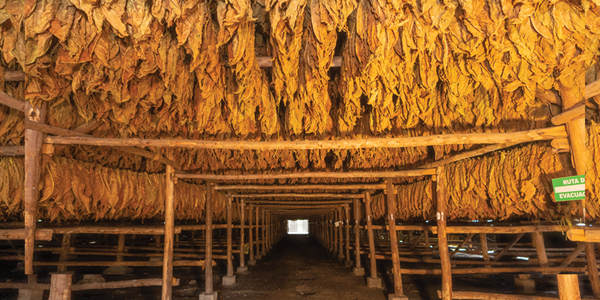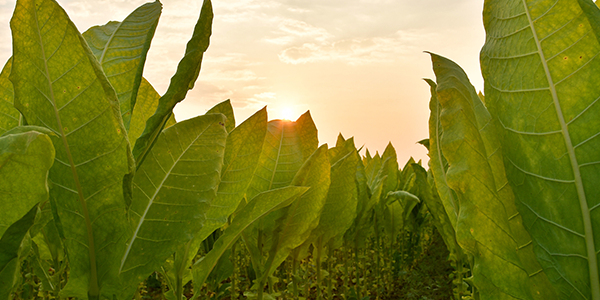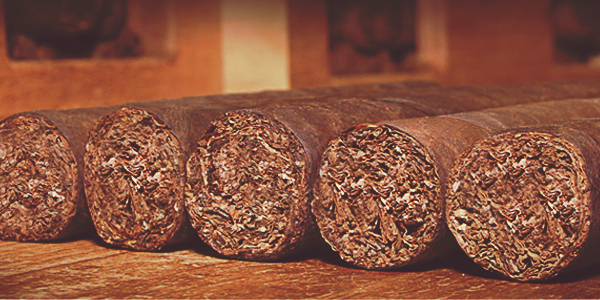Different Tobacco Curing Methods for Cigars
Have you ever tried to pick a tobacco leaf right off the stalk, roll it up, then try to light and smoke it? No, no you haven’t. Maybe somebody did way back in the day, like in 10 B.C., but we learned. And we cured.
What Is Curing?
Curing is the process by which tobacco leaves begin to be prepared for you to consume it. That green, raw leaf is relatively flavorless as a cigar, and it’s too wet to ignite anyway. Generally, tobacco to be used in cigars is cured in a barn, but there are also prefab metal boxes in which curing can be done. To be clear, the tobacco leaves are what get cured. Harvesting them is known as “priming.”
What Does Curing Do?
Curing, usually done by hanging cigar tobacco leaves in a barn, begins the process of lengthy oxidation and the degradation of carotenoids in the leaves. This allows the carotenoids to produce chemicals that help create the sweeter fragrance and flavor aspects of the cigar. The degradation of the carotenoids also helps create the color of the leaf, bringing out a rusty or reddish-brown color. This also contributes to the smoothness of the tobacco.
There are essentially four different initial types of tobacco curing that continue to add the characteristics of color, aroma, and flavor to the cigars you love.
Types of Tobacco Curing
Air Curing
This is the method for curing most tobacco used in premium cigars. The tobacco leaves are taken into tobacco barns, also known as kiln houses. The barns, in a warm climate, are well ventilated and host the leaves for about two months. The distinctive traits of air-cured tobacco are that it’s lower in sugar, giving the tobacco smoke a lighter, sweeter flavor, but retaining high nicotine levels. Cigarette tobacco is also generally air-cured.
Fire Curing
Also done in barns, hardwoods are set on fire and are maintained at an ongoing or intermittent low burn. The result is similar to air-curing, but with some smoke. This method is used for pipe and chewing tobacco, and snuff.
Flue Curing
Tobacco that is flue-cured gets strung onto sticks that get hung from poles in curing barns, much like other methods, but the curing is done using a flue that runs into the barns from external fire boxes. This cures the tobacco without exposing it to smoke and raising the temperature slowly over the whole process. The managed heat shortens the curing time to about a week. The result is high-sugar and medium-to-high nicotine levels in the cured leaves.
Sun Curing
This is self-explanatory. The sun dries the uncovered leaves. The result is generally a higher sugar and lower nicotine content. Don’t confuse this with “sun-grown” tobacco, which means that the tobacco stalks are grown exposed to the sun, as opposed to “shade-grown” tobacco that is covered with gauzy canopies.
Fermentation: The Final Cure
After going through the curing process, cigar tobacco is usually fermented, sometimes twice and, less often, sometimes three times. This is a sort of final stage, or stages, of curing that sweats impurities, most noticeably ammonia, out of the leaves. Tar and nicotine are also released during fermentation, along with other chemicals, all adding to the flavor of a fuller, rounder cigar leaf.
Natural fermentation dissipates moisture in the tobacco leaves and lasts as long as it takes to get the tobacco ready, usually when the pile reaches between 110 and 115 degrees Fahrenheit. At the appropriate time, the piles of tobacco are misted with water, then the tobacco gets aerated for about 24 hours. At the end, a leaf is often rolled up and tested by smoking it.
Everything is well on its way to making that great cigar for your smoking enjoyment.






